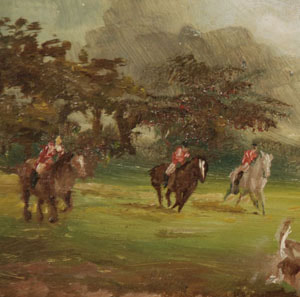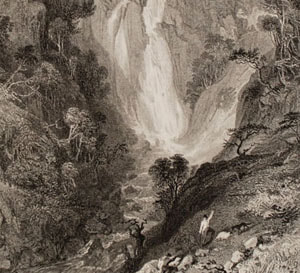Techniques
Here you can discover more about the techniques employed by the artists in our online gallery.
Clicking on the links or images will take you to a short description of the highlighted methods.
Drawing and painting
Here you can discover more about the techniques employed by the artists in our online gallery.
Clicking on the links or images will take you to a short description of the highlighted methods.
Drawing and painting



Printmaking
‘In the long history of printing, and in all the variety of printed images, there are only three basic types of print. This may seem too absolute to be believable, but when looked at more closely it verges on the obvious. Printing is strictly defined as the transferring of ink from a prepared printing surface (the block, plate or stone carrying the image) to a piece of paper or other material. The ink can be carried on raised parts of the printing surface (relief), in lowered grooves (intaglio) or on the surface itself (planographic or surface). Above the surface, below the surface, on the surface – there can be no other way.’
How to Identify Prints
Relief printing
Relief printing techniques encompass:
‘In the long history of printing, and in all the variety of printed images, there are only three basic types of print. This may seem too absolute to be believable, but when looked at more closely it verges on the obvious. Printing is strictly defined as the transferring of ink from a prepared printing surface (the block, plate or stone carrying the image) to a piece of paper or other material. The ink can be carried on raised parts of the printing surface (relief), in lowered grooves (intaglio) or on the surface itself (planographic or surface). Above the surface, below the surface, on the surface – there can be no other way.’
How to Identify Prints
Relief printing
Relief printing techniques encompass:

Woodcuts and wood engravings
Relief etchings
A straightforward example of a relief print is a date stamp used by a librarian. The rubber date numbers and letters are raised above the base level, the librarian presses these raised levels into the ink pad and then stamps the front of the book. Only the raised areas are imprinted onto the paper. Another simple example is a potato print.
Intaglio printing
The term ‘intaglio’ comes from the Italian for incising. Intaglio prints are the opposite of relief prints. Instead of a raised surface (as in the rubber date stamp example above), lines are incised into a plate, physically or by the action of chemicals.
Intaglio printing techniques include:
Relief etchings
A straightforward example of a relief print is a date stamp used by a librarian. The rubber date numbers and letters are raised above the base level, the librarian presses these raised levels into the ink pad and then stamps the front of the book. Only the raised areas are imprinted onto the paper. Another simple example is a potato print.
Intaglio printing
The term ‘intaglio’ comes from the Italian for incising. Intaglio prints are the opposite of relief prints. Instead of a raised surface (as in the rubber date stamp example above), lines are incised into a plate, physically or by the action of chemicals.
Intaglio printing techniques include:



Aquatint
Mezzotint
The majority of the prints we offer for sale are intaglio.
Planographic printing
Any print not produced by relief or intaglio is, by definition, planographic. Prints produced in this category are often referred to as lithographs.
Further reading
Allen, Bryan (1970), Print Collecting, Frederick Muller
Cundall, H M (1929), A History of British Watercolour Painting, B T Batsford Ltd.
Donson, Theodore B (1977), Prints and the Print Market, Crowell
Gascoigne, Bamber (2004), How to Identify Prints, Thames and Hudson
Gray, Basil (1937), The English Print, Adam & Charles Black
Hamerton, Philip Gilbert (1975 reprint), Etching and Etchers, EP Publishing Limited
Heard, Andrew (2001), Whistler, Haden and the Rise of the Painter-Etcher, University of Newcastle
Hind, Arthur M (1963 reprint), A History of Engraving and Etching, Dover Publications
Lucie-Smith, Edward (1996), Art Terms, Thames and Hudson
Reynolds, Graham (1998), Watercolours, A Concise History, Thames and Hudson
Planographic printing
Any print not produced by relief or intaglio is, by definition, planographic. Prints produced in this category are often referred to as lithographs.
Further reading
Allen, Bryan (1970), Print Collecting, Frederick Muller
Cundall, H M (1929), A History of British Watercolour Painting, B T Batsford Ltd.
Donson, Theodore B (1977), Prints and the Print Market, Crowell
Gascoigne, Bamber (2004), How to Identify Prints, Thames and Hudson
Gray, Basil (1937), The English Print, Adam & Charles Black
Hamerton, Philip Gilbert (1975 reprint), Etching and Etchers, EP Publishing Limited
Heard, Andrew (2001), Whistler, Haden and the Rise of the Painter-Etcher, University of Newcastle
Hind, Arthur M (1963 reprint), A History of Engraving and Etching, Dover Publications
Lucie-Smith, Edward (1996), Art Terms, Thames and Hudson
Reynolds, Graham (1998), Watercolours, A Concise History, Thames and Hudson